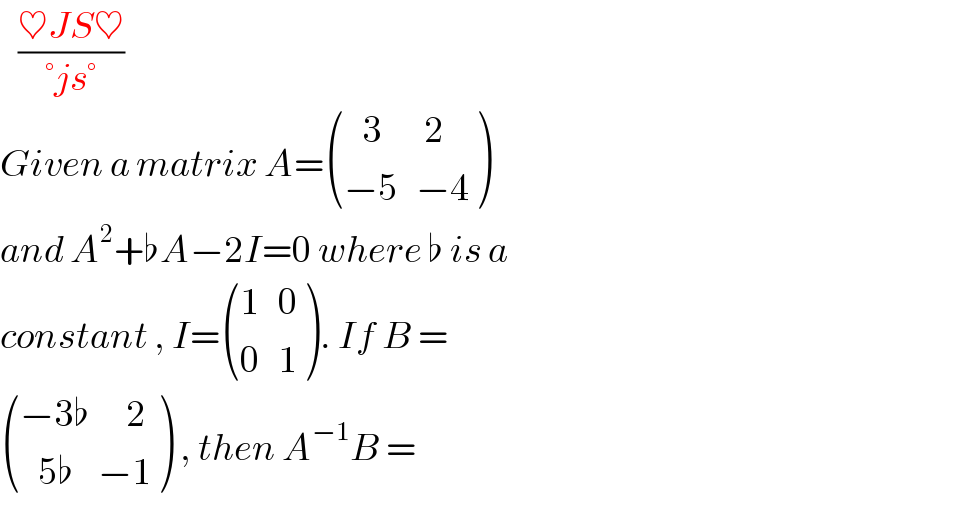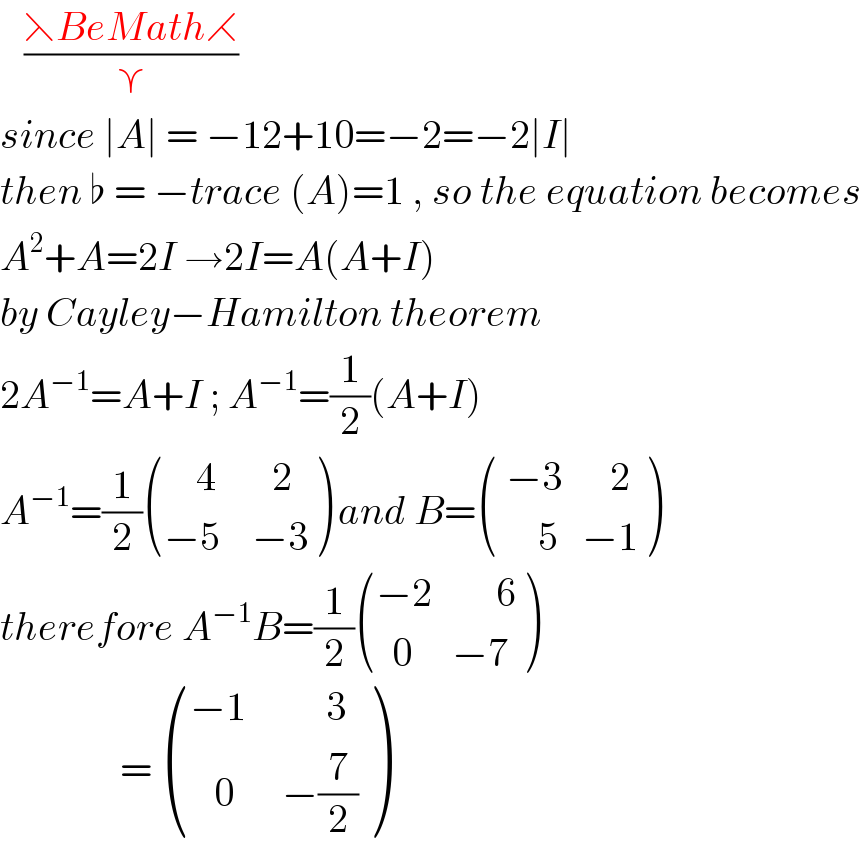
Question and Answers Forum
Previous in Matrices and Determinants Next in Matrices and Determinants
Question Number 108059 by john santu last updated on 14/Aug/20

Answered by bemath last updated on 14/Aug/20

Commented by bemath last updated on 14/Aug/20

